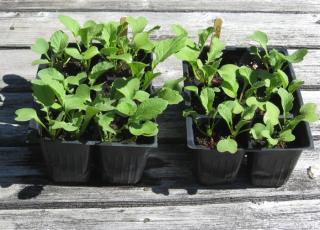THEY may not be the main focus but they are used in a bunch of recipes for eye appeal, chrispness and sweetness.FarmerChick said:LOL 2 dream
I hear ya on roasting, sautee etc. I sure go thru veggies like crazy also
ya know, other than a carrot cake, I can't think of other ways to make a carrot a focus. hmmm....maybe it is meant to be a 'veggie in the group' type root HAHA
I never heard of a 'stuffed carrot' or anything like that. (I am now off to google carrot recipes and see if they are used as a main focus in anything LOL)
I really want to post is this: NC red clay is usually short on the trace minerals containing Boron. I had mine determined by a special soil test after seeing very good growth where I had used boric acid for ant control. the Ag agent recommended borax as a source since the red clay is usually on the acid side. I'm convinced that it really helped all my root vegatables but before I used it I had never had any luck with carrots and beets. Since the compost I used was all local stuff it was lacking in boron too. I don't know if it is considered ORGANIC or not, and I don't care. I used 1 Tablespoon of off the shelf Borax [Laundry section of supermarket] in each 4'x8' section of my raised beds. Guess who won blue ribbons at the County fair! of course there was nobody entered against me in Carrots and Beets.
DO NOT OVER USE only trace amounts are needed and it is toxic to worms and insects [ants] which is how I learned in the first place.~gd


